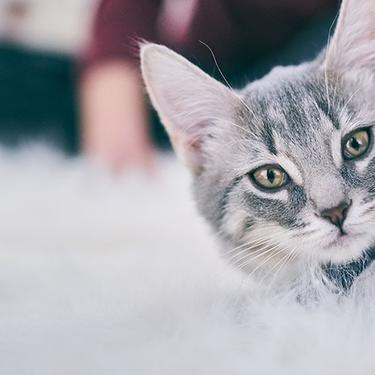
-
Find the right food for your petTake this quiz to see which food may be the best for your furry friend.Find the right food for your petTake this quiz to see which food may be the best for your furry friend.Featured products
 Adult Chicken & Barley Recipe Dog Food
Adult Chicken & Barley Recipe Dog FoodSupports healthy immune system, digestion, lean muscle & beautiful coat
Shop Now Adult 7+ Chicken Meal, Barley & Rice Recipe Dog Food
Adult 7+ Chicken Meal, Barley & Rice Recipe Dog FoodSupports energy level & beautiful coat. Helps keep immune system, heart & kidneys healthy
Shop Now Adult Large Breed Chicken & Barley Recipe Dog Food
Adult Large Breed Chicken & Barley Recipe Dog FoodSupports healthy joints, immune system, digestion, lean muscle & beautiful coat
Shop NowFeatured products Kitten Sensitive Stomach & Skin Salmon & Vegetable Stew
Kitten Sensitive Stomach & Skin Salmon & Vegetable StewSupports kitten growth, digestive health, nourishes skin and promotes a lustrous fur
Shop Now Adult Indoor Salmon & Vegetable Medley Cat Food
Adult Indoor Salmon & Vegetable Medley Cat FoodPrecisely balanced nutrition for indoor cats with the delicious taste of savory salmon and vegetables
Shop Now Adult Urinary Hairball Control Savory Chicken Entrée cat food
Adult Urinary Hairball Control Savory Chicken Entrée cat foodSupports the health of the whole urinary system with optimal levels of magnesium
Shop Now -
Dog
- Dog Tips & Articles
-
Health Category
- Weight
- Food & Environmental Sensitivities
- Urinary
- Digestive
- Joint
- Kidney
- Dental
- Cancer
-
Life Stage
- Puppy Nutrition
- Adult Nutrition
- Senior Nutrition
Cat- Cat Tips & Articles
-
Health Category
- Weight
- Skin & Food Sensitivities
- Urinary
- Digestive
- Kidney
- Dental
- Stress
- Cancer
-
Life Stage
- Kitten Nutrition
- Adult Nutrition
Featured articles Compare Your Pet Food's Calories to Other Brands
Compare Your Pet Food's Calories to Other BrandsCompare Hill's Science Diet dog and cat food's calories against other pet food brands and AAFCO recommended maximum calorie count.
Read More Pet Food Storage Tips
Pet Food Storage TipsDiscover how and where to store your dry, as well as canned, dog and cat food. Learn how to find the "best before" dates on all Hill's pet food packaging.
Read More The Incredible Science Behind Your Pet's Microbiome
The Incredible Science Behind Your Pet's MicrobiomeLearn what a pet's microbiome is, how it contributes to your pet's gut & overall health, and why nutrition is important in maintaining healthy microbiomes.
Read More -


What You Should Know About Ear Mites in Cats!
Ear mites are parasites that typically live in the ear canal but can also live on the skin’s surface,. They can be challenging to see with the naked eye, but you may see little white specks moving in the ear. These mitesy are transferred from cat to cat by direct contact and are considered highly contagious.
Signs
Ear mites are a common cause of ear problems in cats. Although all cats in a household may be affected, ear mites usually are seen in kittens and outdoor pets.
Signs to watch for:
- Reddish-black material in the ear canal(s)
- Rubbing and scratching the affected ear
- Ear twitching and head shaking
- Occasionally, ear mites infest other parts of a cat’s body. Hair loss in a particular area and reddened, scratched skin suggest such an infestation.
Diagnosis by your veterinarian
The diagnosis will be confirmed by your veterinarian when they examine your cat’s ear canals with a special magnifying instrument called an otoscope. Ear mites can be found during the examination or may also be found by examining your cat’s earwax under a microscope.


Tasty Tips
Treatment and Home Care
Your veterinarian will likely need to clean your cat's ears before treatment will be effective. Debris in the ear canal may block medications from reaching the ear mites.There are different medications to treat ear mites and your veterinarian will be able to recommend the one that will be best for your cat. Make sure to follow all of your veterinarian’s instructions for ear cleaning or medications your cat needs at home.
Because ear mites are highly contagious, your veterinarian may want to examine and possibly treat the other pets living in your house. A follow-up visit with your veterinarian in 2-3 weeks will help ensure the ear mites are gone.


One of our staff authors prepared this article for you
Related products

Supports the health of the whole urinary system with optimal levels of magnesium

Precisely balanced nutrition for indoor cats with the delicious taste of savory salmon and vegetables

Supports kitten growth, digestive health, nourishes skin and promotes a lustrous fur

Over 70% of cats lost weight within 10 weeks when fed this nutrition
Related articles

Discover the benefits of Hill's line of kitten foods and how they provide complete and balance nutrition for growing kittens.

Discover how to identify cat sensitive skin and what you can do to help your cat thrive from head to paw.

What is the best food for an overweight cat? Learn all about weight control food for cats, including what's in it and how it works.

When you adopt a cat, you don't just gain a best friend; you also save her life. Here's why getting a cat from a local animal shelter makes so much sense.

Put your cat on a diet without them knowing
Our low calorie formula helps you control your cat's weight. It's packed with high-quality protein for building lean muscles, and made with purposeful ingredients for a flavorful, nutritious meal. Clinically proven antioxidants, Vitamin C+E, help promote a healthy immune system.
Put your cat on a diet without them knowing
Our low calorie formula helps you control your cat's weight. It's packed with high-quality protein for building lean muscles, and made with purposeful ingredients for a flavorful, nutritious meal. Clinically proven antioxidants, Vitamin C+E, help promote a healthy immune system.

